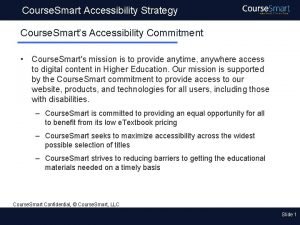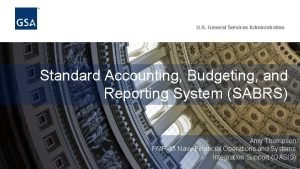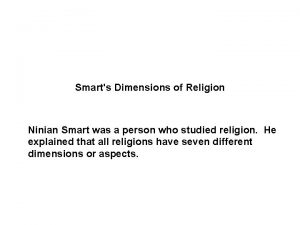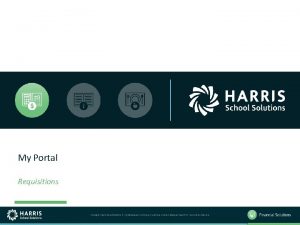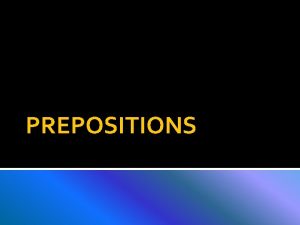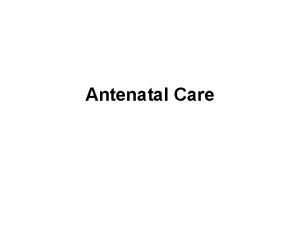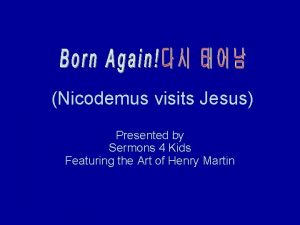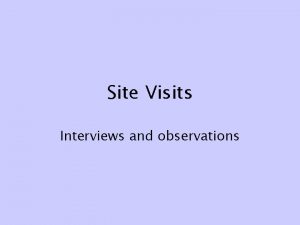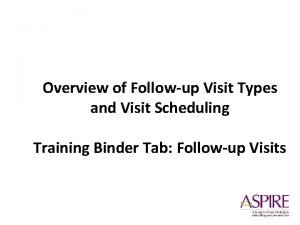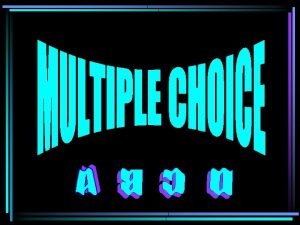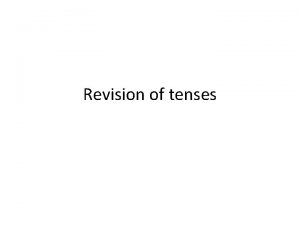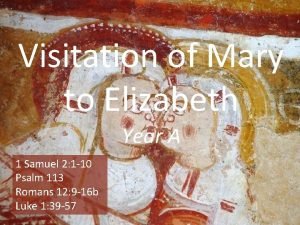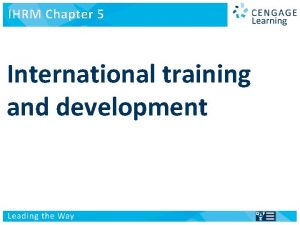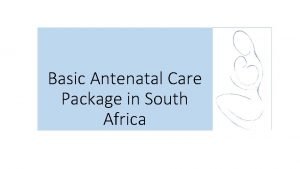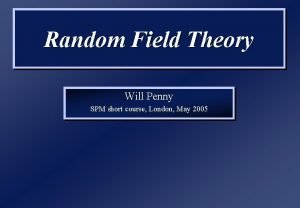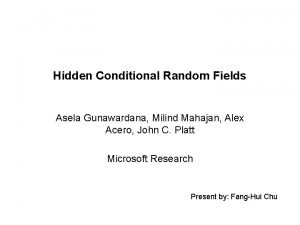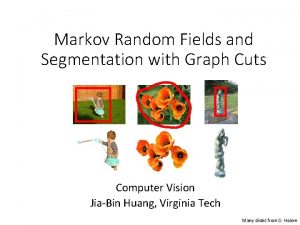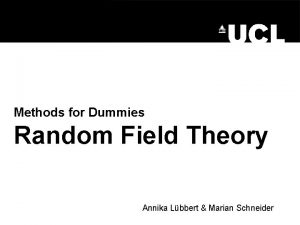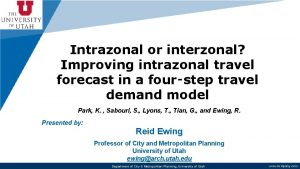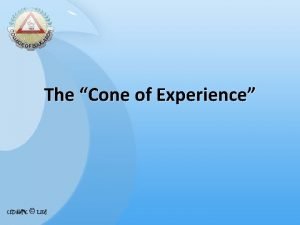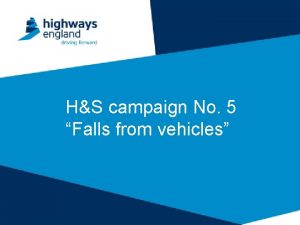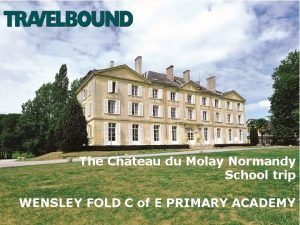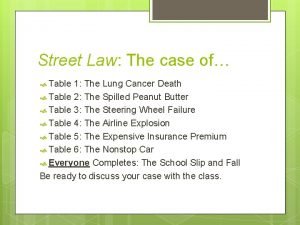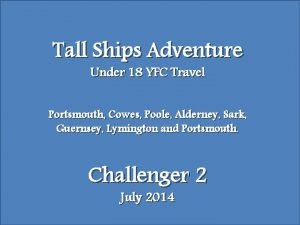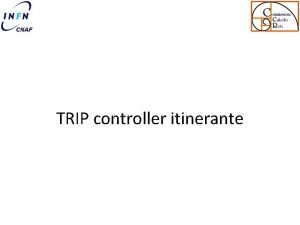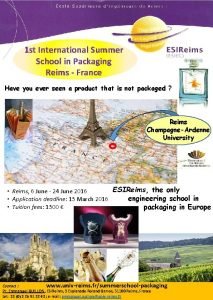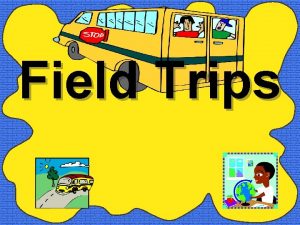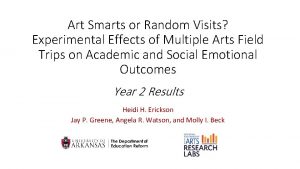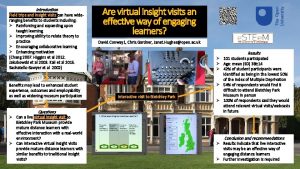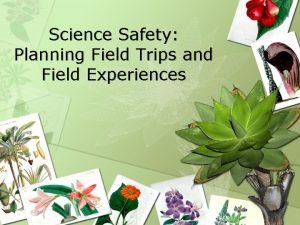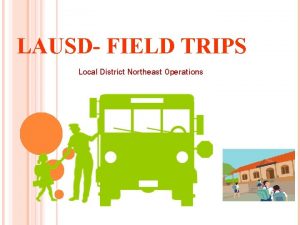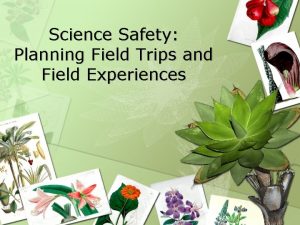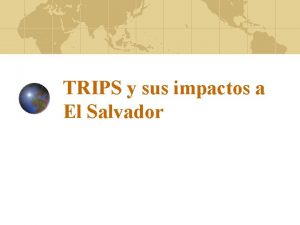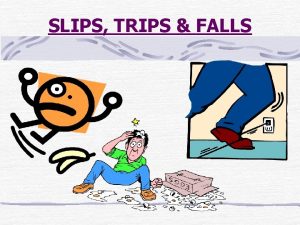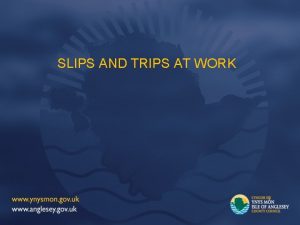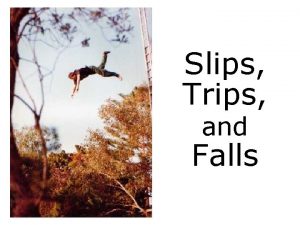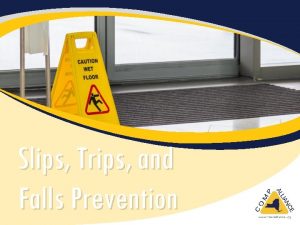Arts Smarts or Random Visits Arts Field Trips
















































- Slides: 48

Arts Smarts or Random Visits: Arts Field Trips in the American Education Policy Context Angela R. Watson, Ph. D Senior Research Fellow, Johns Hopkins Institute for Education Policy Co-Researcher, National Endowment for the Arts UARK Research Lab 1

Overview of Presentation Altered Attitudes and Actions: Social-Emotional Effects of Multiple Arts Field Trips -Reports the year-two results of an experimental study -Finds positive effects on social-emotional outcomes Inside the Black Box: Stakeholder Perceptions on the Value of Arts Field Trips -A qualitative extension of the primary experimental study -Data suggests that students and teachers value field trips State of the Art: Declining Trends in Art Museum Field Trip Attendance -A mixed methods study of field trip attendance across the nation -Data indicate decline in field trip attendance to art museums across the country Overarching Conclusions 2

Why should we care if students have access to the arts? Art is a reflection of us “The aim of art is to represent not the outward appearance of things, but their inward significance. ” – Aristotle Arts are an example of not just living, but flourishing. (Seligman, 2007) Art is a reflection of society Shared experiences are important for the generation of social and cultural capital (Bourdieu, 1977 and 1986) Cultural capital leads to cultural and social mobility and can be gained through experience ( Di. Maggio, 1982) We learn in community with one another, by example, and from a More Knowledgeable Other (Bandura, 1977) Arts exposure is associated with Higher academic performance (Ruppert, 2006; Jægar and Møllegarrd, 2017) Better health and wellbeing (NEA, 2018) Civic engagement (NEA, 2018) Americans spend $800 billion on art and culture annually (USCPSA, 2019) 3

Why should providing this arts access be the job of our education system? Long established tradition of schools taking students on educational field trips (Catterall, 2012) Arts field trips and exposure benefits students -Increased academic outcomes like Knowledge, creative and critical thinking skills (Greene et al. , 2014; Bowen, Greene, & Kisida, 2014, ; Kisida, Greene, & Bowen, 2014; RK&A, 2018) Test scores (Ludwig, Boyle, & Lindsay, 2017; Bowen & Kisida, 2019; Erickson et al. , 2019) Attendance and disciplinary infractions (Bowen & Kisida, 2019; Erickson et al. , 2019) School engagement and persistence (Jægar & Møllegarrd, 2017, Bowen & Kisida, 2019, Erickson et al. , 2019) -Other desirable outcomes Consumption (Greene, Kisida, & Bowen, 2014; Greene, Hitt, Kraybill, & Bogulski, 2015; Greene, Erickson, Watson, & Beck, 2018) Social-emotional skill acquisition (Bowen, Greene, & Kisida, 2014; Greene, Kisida, & Bowen, 2014; Randi Korn & Associates, 2018; Greene, Hitt, Kraybill, & Bogulski, 2015; Greene, Erickson, Watson, & Beck, 2018) Gap in arts exposure by SES and race (Kornrich, 2016) -Those with less arts exposure receive greatest benefit (Bowen, Greene, & Kisida, 2014; Greene, Kisida, & Bowen, 2014; Greene et al. , 2018) 4

Why is this a concern now? Decline in field trips (Government Accountability Office, 2009; Mc. Cord & Ellerson, 2009; Rabkin & Hedberg, 2010) Accountability pressure, increased focus on “seat time” and math/reading (Gadsden, 2008; Rabkin & Hedberg, 2011; Student & Youth Travel Association, 2016) Decrease in the amount of arts exposure IN schools (Government Accountability Office, 2009) Particularly for minority students and students in struggling schools (Government Accountability Office, 2009; Keiper, Sandene, Persky, & Kuang, 2009) 5

Paper 1: Altered Attitudes and Actions: Social-Emotional Effects of Multiple Arts Field Trips Angela R. Watson, Jay P. Greene, Heidi Holmes Erickson & Molly I Beck 6

Overview - Randomly assign 4 th and 5 th grade students to receive 3 arts field trips -Measure impact on student social-emotional outcomes Results -Increase in social perspective taking and tolerance -Increase survey effort for girls that compounds What we add to the literature -Experimental, longitudinal design, multiple arts field trips -Large urban school district serving majority African American students -Student-level administrative data for multiple years 7

Intervention & Research Questions 3 art field trips to The Woodruff Arts Center in Atlanta, Georgia: High Museum of Art, Alliance Theatre, Atlanta Symphony Orchestra -Do students experience social-emotional benefits from multiple field trips to arts institutions? -Do benefits compound with increased exposures? -Do benefits persist when treatment ceases? We hypothesize that -Students would experience increases in social-emotional skill levels -Student benefits will increase with more field trips 8

Research Design: Randomized Control Trial Randomly assign 4 th or 5 th grade students to serve as treatment or control -Cohort 1 4 schools- 4 th & 5 th grade -Cohort 2 4 original schools- 4 th grade 6 new schools- 4 th & 5 th grade This allows us to estimate the effect of 3 field trips in 1 year 6 field trips in 2 years 1 year after treatment 9

Data & Timeline 10 elementary schools ~1, 400 Students Student Surveys Interest in art consumption and participation Social emotional measures- social perspective taking, tolerance, empathy Conscientiousness and effort - Non-response and careless answers Administrative records End of year test scores 10

Pre-Treatment Comparison -Majority African American Pre-Treatment Comparisons of Treatment and Control Groups Control (mean) Treatment (mean) Difference (T-C) Observations 10. 48 10. 59 0. 11 1135 Female 51. 21% 51. 14% -0. 07 1363 Black or African American 98. 82% 99. 32% 0. 50 1018 Students with Disabilities 15. 50% 15. 27% -0. 23 1228 ELA -0. 35 -0. 31 0. 04 1202 Math -0. 32 -0. 28 0. 04 1201 Combined Tests -0. 37 -0. 34 0. 03 1205 Infractions 0. 12 0. 00 1363 Suspensions 0. 04 0. 06 0. 02 1363 4. 47% 4. 58% 0. 11 1228 "School is Boring" 0. 04 0. 00 -0. 04 1193 Desire to Consume Art -0. 05 0. 14 0. 19*** 1222 Desire to Participate in Art 0. 03 0. 05 0. 02 1222 Previously attended The Woodruff 75. 10% 80. 61% 5. 51* 1181 Previously attended Alliance Theatre 32. 10% 30. 84% -1. 26 1211 Previously attended Atlanta Symphony 39. 74% 47. 95% 8. 21** 1216 Previously attended High Museum of Art 49. 03% 52. 38% 3. 35 1133 Variables Demographics: Age in years Baseline Standardized Test Scores -No significant differences -test scores -disciplinary infractions -Differences -consumption -previously attended -symphony Baseline Discipline Measures Prior Year Percent Absent *** p<0. 01, ** p<0. 05, * p<0. 1 11

Outcomes: Social Perspective Taking How often to you attempt to understand your friends better by trying to figure out what they are thinking? When you are angry at someone, how often do you try to “put yourself in his or her shoes? ” Treatment Effect on Social Perspective Taking Combined 1 st Treatment 0. 172 (0. 107) Cohort 1 0. 276* (0. 155) Cohort 2 0. 063 (0. 130) 2 nd Treatment -0. 076 -0. 045 (0. 239) (0. 265) Previous Treatment 0. 279 0. 388 (0. 341) (0. 357) Pre SPT 0. 433*** 0. 274*** 0. 581*** (0. 063) (0. 092) (0. 055) Pre Composite Test Score 0. 122* 0. 183 0. 106 (0. 064) (0. 111) (0. 077) Female 0. 204* 0. 141 0. 166 (0. 123) (0. 195) (0. 146) Grade 6 0. 018 0. 065 (0. 289) (0. 305) Observations 290 149 186 Number of Students 238 97 186 Fixed effects for the ten elementary schools and student random effects are included in each model. Standard errors clustered at the teacher level are in parentheses. Observations refer to the number of observations in the panel. Number of students refers to the number of unique students in the sample *** p<0. 01, ** p<0. 05, * p<0. 1 12

Outcomes: outcomes Tolerance I think people can have different opinions about the same thing. Treatment Effect on Tolerance "Different Opinions" Combined Cohort 1 Cohort 2 1 st Treatment 0. 112* 0. 116 0. 087 (0. 058) (0. 089) (0. 075) 2 nd Treatment 0. 165 0. 163 (0. 102) (0. 125) Previous Treatment -0. 149 -0. 168 (0. 200) (0. 211) 0. 174*** 0. 188*** 0. 153*** (0. 045) (0. 063) (0. 051) 0. 161*** 0. 181*** 0. 153*** (0. 033) (0. 047) (0. 043) 0. 282*** 0. 335*** 0. 276*** (0. 068) (0. 082) (0. 089) Grade 6 -0. 307* -0. 317* (0. 175) (0. 191) Observations 1, 187 665 695 927 405 695 Pre "Different Opinions" Pre Composite Test Score Female Number of Students Fixed effects for the ten elementary schools and student random effects are included in each model. Standard errors clustered at the teacher level are in parentheses. Student random effects are included when students are observed in their first and second treatments or their first and previous treatment. Observations refer to the number of observations in the panel. Number of students refers to the number of unique students in the sample *** p<0. 01, ** p<0. 05, * p<0. 1 13

Outcomes: Conscientiousness Treatment Effect on Survey Carelessness Combined Cohort 1 Cohort 2 0. 039 0. 021 0. 136 (0. 090) (0. 095) (0. 109) 0. 138 0. 186 (0. 211) (0. 180) 0. 065 0. 096 (0. 164) (0. 169) -0. 243** -0. 367** -0. 187 1 st Treatment 2 nd Treatment Previous Treatment 1 st Treat*Female Careless answering and item nonresponse, the degree to which students carefully answer questions and complete the survey, were used as proxies for conscientiousness and effort. (0. 107) (0. 149) (0. 138) 2 nd Treat*Female -0. 374* -0. 495** (0. 223) (0. 232) 0. 067 -0. 033 (0. 150) (0. 173) 0. 343*** 0. 296*** 0. 406*** (0. 030) (0. 037) (0. 041) -0. 144*** -0. 083* -0. 172*** (0. 033) (0. 044) (0. 039) 0. 024 0. 087 0. 009 (0. 074) (0. 108) (0. 082) -0. 385*** -0. 371*** (0. 103) (0. 091) 1, 211 675 713 946 410 713 Prev Treat*Female Pre Carelessness Pre Composite Test Score Female Grade 6 Observations Number of Students Coefficients interpreted as “less careless” therefore more Conscientious. Fixed effects for the ten elementary schools and student random effects are included in each model. Standard errors clustered at the teacher level are in parentheses. Observations refer to the number of observations in the panel. Number of students refers to the number of unique students in the sample *** p<0. 01, ** p<0. 05, * p<0. 1 14

Conclusions -Evidence of increased social-emotional benefits from arts exposure -First study to show compounding benefits -Effects appear to be driven by Cohort 1 Next Steps -Data collection just completed for year 3, cohort 3 -More variation in treatment conditions -Plans to follow students into middle school and beyond 15

Paper 2: Inside the Black Box: Stakeholder Perceptions on the Value of Arts Field Trips Angela R. Watson 16

Overview Motivation Experiment provides causal estimates, no details of participant experience or perception of that experience Goal -Describe context of field trips -Document stakeholder experience Results -Teachers advocate for arts field trips -Believe they are meaningful experiences -Important part of their job as educators -Students advocate for arts field trips for themselves and their peers -Recall detail months after the experiences -Use the experiences to connect to past experiences, and to peers through shared experience. 17

Literature Arts exposure provides student with access to social and cultural capital -Particularly for students who may lack experience and exposure (Adams, Foutz, Luke, & Stein, 2006) -Valued by charter schools who serve similar populations (Matthews, 2009; Maranto, 2015) Increased arts exposure… -Benefits may compound with increased exposure (Watson, Greene, Erickson, & Beck, 2019) -Increase school engagement (Erickson, et al. , 2019) and academic resilience (Kanevsky, Corke, & Frangkiser, 2008) -Students demonstrate increased “human connection”(RK&A, 2018) 18

Research Questions and Data Collection 1. What is the context of the field trip experience? -8 visits to Atlanta, 20 visits to Woodruff Art Partner venues, 18 school visits, 6 local cultural sites 2. How do stakeholders experience the field trip? -4 Field trip observations on stakeholder experience and engagement 3. What do participants think of the experience? What are their perceptions and how do they make meaning from the field trips? -Semi-structured interviews with 34 adult and 8 student stakeholders Coded for consistent themes among the various data collection measures 19

Results- RQ 1 Context What is the context of the field trip experience? State - Renewed focus on the arts, sticks and carrots to incentivize arts in schools. Atlanta - Promotes cultural field trips in partnership with schools and arts/cultural providers. “further[ing] student understanding of art and culture” and to “increase students exposure and knowledge of art and cultural institutions” and to “ enrich student’s education beyond the walls of the classroom. ” City of Atlanta 20

Results- RQ 1 Context What is the context of the field trip experience? District/Schools - Large, urban, African American, high FRL, highly mobile students and teacher body, 20% at proficient, Local Governance Charters Teachers - Advocate for field trips, repeated the words “ exposure” and “experience. ” “This is a good chance for them to come and get an experience, and get some exposure. That is our job, to expose these kids to things, because how can they even know if they like something or not if they have never seen it before? Maybe this will be something they will like when they grow up. ” Teacher 21

Results: RQ 1 Context Woodruff Art Center - 3 Art Partners on one campus -800, 000 visits a year -Largest arts educator in the state, impacting 200, 000 students -Host professional development -Outreach programs -Open access arts materials “We are deeply committed to getting people early, getting them in, getting them comfortable. ” High Museum of Art administrator 22

Findings- RQ 2 Experience How do stakeholders experience the field trip? 23

Alliance Theatre -770 seat Tony Award-winning theater -Alliance Theatre for Youth and Families -Cinderella and Fella -The Jungle Book -Hour long culturally relevant performances -Evidence of high student engagement -Evidence of materials use in schools -Evidence of integration into lessons “We watched both of them [Jungle Book movies]. Mr. _ told us we were going to compare and contrast both of them [Mogli]. ” Trevon Courtesy Alliance Theatre 24

Atlanta Symphony Orchestra Grammy-Award winning symphony Concerts for Young People Late arrival, concert delayed 20 min. Evidence of disengagement Evidence of lack of adult buy-in Evidence of materials use Evidence of incorporation in lessons “I loved all the woodwinds, and the violin, and the brass, and violas. ” Aliyah Courtesy Atlanta Symphony Orchestra 25

High Museum of Art Large (157 K works) leading art museum in Southeast Docent led tours with hands-on studio component Arts Access program covers admission, busing, return family ticket Late arrival Evidence of high student engagement No evidence of materials use No evidence of incorporation into lessons “We are always asking ourselves how we can better serve schools. Museums should be a resource for schools. ” High Museums of Art administrator Untitled, courtesy of High Museum of Art 26

Findings- RQ 3 Perceptions What do participants think of the experience? What are their perceptions and how do they make meaning from the field trips? 27

Student Interviews The art museum was the favorite field trip. “Because we had, we made a project, and they had us looking at different kinds of art and stuff. ” Trevon “Because we got to paint. ” Shanice 28

Student Interviews Students could recall impressive detail about their experiences “The, uh, it was different kinds of glass and stuff. At first, I thought it was one whole mirror, but then the lady, she said it was like mirrors in front of each other. ” Trevon 11 Panes , courtesy of High Museum of Art 29

Student Interviews Students shared a common experience, and used that experience to connect to peers and create new shared experiences. “I liked the TV that tells time. Y’all didn’t see that? Because it was like. . . It was like people on the inside that move around and um… clean it up and stuff. ” Demetrius Analog Clock, courtesy of High Museum of Art 30

Student Interviews Student on the definition of field trips “A field trip is like a trip away from campus where you can learn about other things you haven’t learned about ever before, or if you learned about it, you can learn more about it. ” Aliyah 31

Student Interviews Students on the importance of field trips “Because it tells us about how to do more work. It shows us how to draw… and to play instruments. And it shows us how to create, ” Trevon “Because it is a learning experience. I learned that like, what if somebody want to be an artist like when they grow up. They can like get ideas from the art museum. ” Demetrius “Oh yes, it’s important because, um, when it be telling you about the work you be doing in the classroom, it reflects on your work. The captions under the pictures, they be showing me, when they be talking. ” Darryl 32

Student Interviews “If you want your child to stay in school, make sure they go on a field trip to learn more about things…especially if you don’t want to see the same walls over and over again. ” Aliyah 33

Conclusions -Description of context and experience adds to our understanding of the experimental study and of arts field trips in general. -Students and teachers advocate for field trips. -The words “exposure” and “experience” were key to the value of field trips. -Students were engaged, used field trips to connect past experiences, and to connect with peers through shared experiences. 34

Paper 3: State of the Art: Declining Trends in Art Museum Field Trip Attendance Angela R. Watson 35

Overview Goal Document decline in attendance with longitudinal institutional attendance data, not survey estimates, and any policy pressure impacts. Results -Field trips have declined -Museums report school accountability pressure impacts field trips -Student transportation limits access -Docents limit inclusivity What we add to the literature First study to compile art field trip attendance data over time and across multiple institutions 36

Literature ESSA calls for well-rounded education (US Department of Education, 2016; Ludwig, Boyle &Lindsay, 2017) Renewed focus on arts integration and field trips (Horowitz 2004; Ludwig, Boyle &Lindsay, 2017) National Endowment for the Arts reports increased adult consumption of the arts since the Great Recession, but declining attendance for minorities and economically disadvantaged adults (Shewfelt, Ivanchenko, Menzer, & Shingler 2015; National Endowment for the Arts, 2018) 37

Research Questions 1. Has art museum field trip attendance declined and does any decline appear to be related to policy or other shocks? 2. What is the perceived impact of education policy changes on arts field trip attendance and access? 3. What other pressures or practices appear to be impacting arts field trip attendance and access? 38

Data Collection Strategy Data Collection: site visits, field trip observations, interviews, attendance data -Search of arts institutions in a convenience sample of states by region -Initial contact via email or phone -Conducted site visit, observation or interview and asked for data -Requested data from 2000 to 2018 Increased sample by contacting additional states in each region 39

Sample 38 Museums contacted, 35 responded, 31 provided an interviews 12 field trip observations, attendance data from 18 institutions 40

What I hoped to see… K-12 Field Trip Attendance at an Art Museum in Minnesota 120000 Great NCLB Recession ESSA 100000 Attendance A clear trend like in Minnesota 80000 60000 40000 20000 0 2000 01 02 03 04 05 06 07 08 09 10 11 12 13 14 15 16 17 Year MN 41

Art Museum Attendance Data for 18 institutions in 16 states and D. C. K-12 Field Trip Attendance at 18 US Art Museums 120000 Great NCLB Recession ESSA 100000 80000 60000 40000 20000 0 2000 AR 01 02 03 CA CO DC 1 04 DC 2 05 FL 06 GA 07 08 IA IL 09 IN 10 KY 11 MA 12 MN 13 MO 14 NE 15 OH 16 PA 17 WI 42

4 Museums with Increased Attendance -Art museum in Colorado made all field trips free -Florida institution built a new museum with new funding for field trips and buses -Kentucky institution has a brand new facility but barely has an increase. - Arkansas museum is free but attendance has flattened K-12 Field Trip Attendance at 18 US Art Museums 100000 Great NCLB Recession ESSA 80000 60000 40000 20000 0 2000 01 02 03 04 05 06 07 AR 08 CO 09 FL 10 11 12 13 14 15 16 17 KY 43

Policy Pressures & Structural Limitations - Majority of museums cited school accountability pressures as impacting access, attendance, and programming. “I can count on one hand how many Title I schools have a visual arts program. ” VA “They get one field trip a year and we have to justify a trip to the museum. ” TN -Transportation is a major issue limiting access and attendance -Docent tour structure enhances access but limits inclusivity 44

Conclusions - Field trip attendance in this sample is in decline. - Large changes to cost barriers does increase attendance. - Increased attendance for large exhibitions hints at ceiling for attendance when motivated. - Solving transportation bottleneck could increase capacity, access, and attendance. 45

Overarching Conclusions -Students benefit from arts field trips -Students and teachers advocate for these “experiences” and “exposures” -Field trip attendance in decline -If arts field trips benefit students then equitable access to these experiences deserves attention. -If access is limited in schools by physical or structural barriers to certain groups of students, this becomes a civil rights issue. -Schools can serve as equitable access providers to the arts. -Arts exposure could serve to -thickening a thinned curriculum -engage students in school -help them grow their cultural capital and social mobility 46

Questions? Thank you 47

Model • 48
 Street smart vs book smart
Street smart vs book smart Emc smarts
Emc smarts Course smarts
Course smarts Standard accounting budgeting and reporting system
Standard accounting budgeting and reporting system Christina cornell
Christina cornell Ninian smarts 7 dimensions
Ninian smarts 7 dimensions Web smarts
Web smarts Random assignment vs random sampling
Random assignment vs random sampling Random assignment vs random selection
Random assignment vs random selection Grade 8 creative arts notes
Grade 8 creative arts notes Fill in the gaps using the right preposition of time
Fill in the gaps using the right preposition of time Antenatal visits
Antenatal visits Nicodemus visits jesus
Nicodemus visits jesus Benefits of site visits
Benefits of site visits Follow-up visits
Follow-up visits Pastoral home visits
Pastoral home visits Who does mercutio curse as he lies dying after a duel?
Who does mercutio curse as he lies dying after a duel? Reddit doctor stories
Reddit doctor stories Put each
Put each Mary visits elizabeth
Mary visits elizabeth Components of ihrm
Components of ihrm Antenatal card template south africa
Antenatal card template south africa Margo and her parents (visit-visits) each other often
Margo and her parents (visit-visits) each other often Random field theory
Random field theory Conditional random field
Conditional random field Markov random field
Markov random field Random field theory
Random field theory Data types and field properties
Data types and field properties Field dependent vs field independent
Field dependent vs field independent Field dependent definition
Field dependent definition Gauss law in magnetism
Gauss law in magnetism Q factor of capacitor
Q factor of capacitor Difference between electric field and magnetic field
Difference between electric field and magnetic field E field h field
E field h field Individual differences factors
Individual differences factors External-external trips
External-external trips Intrazonal vs interzonal
Intrazonal vs interzonal Visual symbols cone of experience
Visual symbols cone of experience Hse slips trips and falls video
Hse slips trips and falls video What is trips
What is trips Slips trips and falls presentation
Slips trips and falls presentation Nice trips todeals
Nice trips todeals School trip normandy
School trip normandy Business trips for students
Business trips for students Sixteen year old carrie is babysitting
Sixteen year old carrie is babysitting Adventure-trips in portsmouth
Adventure-trips in portsmouth Trips everywhere 1
Trips everywhere 1 Article 27.3(b) of the trips agreement
Article 27.3(b) of the trips agreement School trips reims
School trips reims


